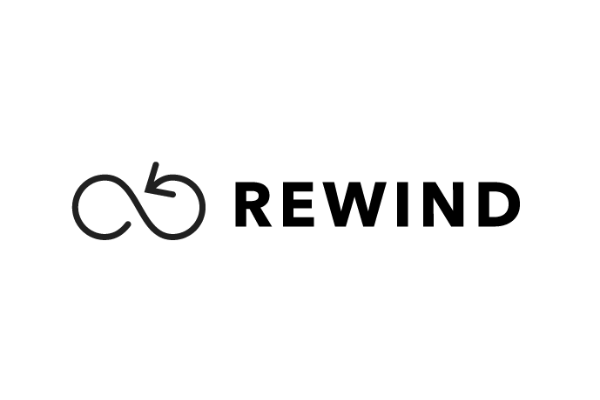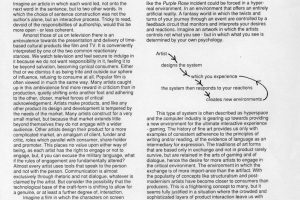Reeves, Daniel
From impassioned indictments of America’s culture of violence to soulful lamentations of spiritual loss, Daniel Reeves’ body of work constitutes an important elaboration of video poetics. Reeves began working in video in 1979. Combat experiences in Vietnam were the driving force behind his early videotapes, which developed from preparatory work in sculpture, photography and film, and culminated in a classic work, Smothering Dreams (1981), which won three Emmy awards.
Subsequent tapes refined this work’s use of poetic text and structure, addressing inhumanity, dispossession and social upheaval with a highly lyrical sensibility, and from an outlook informed by Eastern philosophy. These later works owe much to extensive travels throughout Asia. In outlining Reeves’ video poetics, Amida (1983) and A Mosaic for the Kali Yuga (1986) can be seen as forming bookends in the exploration of formal strategies, arriving at their epilogue texts through elegantly precise visualizations that echo the illuminations and exigencies of the world views being addressed. Amida’s observations are entirely concrete, while Mosaic’s media-weaving employs sophisticated image-processing technology.
Since 1988 Reeves has been focusing on sculpture projects, digital prints, and video installations.
The videotapes Ganapati/A Spirit in the Bush (1986) and Sombra a Sombra (1988), along with Sabda (1984), occupy the central ground in Reeves’ body of work, transforming different locations by adopting the visions of various source texts by poets like Garcia Lorca, Cesar Villejo and Kabir. In this way, Reeves helps us to see according to what we hear, creating elegant realizations and rhythms that inspirit the contemplations of this companion poetry.
Reeves was born in 1948 in Washington, D.C. He received a B.A. and an A.S. from Ithaca College. Among his numerous grants are six awards from the National Endowment for the Arts, three awards from the New York State Council on the Arts, and a John S. Guggenheim Memorial Foundation Fellowship. In 1988, he received a United States/Japan Exchange Fellowship. Reeves has served as artist-in-residence at the Television Laboratory at WNET/Thirteen, New York, and the Experimental Television Center, Owego, New York, among other institutions. His videotapes have been broadcast widely and exhibited internationally, at festivals and institutions including the Tokyo Video Festival, Japan; San Sebastian Video Festival, Spain; American Film Institute National Video Festival, Los Angeles; Documenta 7, Kassel, Germany; Edinburgh International Film Festival, Scotland; the Locarno Film Festival, Switzerland; Institute of Contemporary Art, Boston; Whitney Museum of American Art Biennial, New York; Musee du Louvre, Paris; The Tate Gallery, London; and The High Museum of Art, Atlanta. He is currently a research fellow in Visual Communications at the Edinburgh College of Art.
Reeves lives in Scotland and France.
Electronic Arts Intermix (www.eai.org)
-
-
Videography:
Videotapes and Installations
1988
Well of Patience (12 screen installation, Tate Liverpool)
Sol y Sombra1989
Angels / Anvils (10 screen, Third Eye Centre, Glasgow)1990
Eingang (14 screen)
Try To Live To See This (3 screen)1992
Jizo Garden (14 screen, CCA, Glasgow)1993
The Sleepers (3 screen, An Lanntair Gallery, Stornaway)1995
Obsessive Becoming
One With Everything -
Artist works:
-
Artist assets:
-
Quotes:
"There was a kind of 'Eureka' situation when I was able to sit down with U-matic video editing. I transferred the film footage to video. It was precisely the plasticity, the spontaneity and the very smallish gap between inspiration and execution that was quite apparent to me. I...transferred all of this imagery, 3 or 4 hours of film material that I had researched and selected from the National Archives in Washington... I had never been able to make sense of this material. But when I transferred this material to Quad (2-inch video) I was able to modify the footage, change the contrast add colour solarize. I created lots of different effects reels from the footage as well as the straight transfers... So by transferring this material to video I was able to explore a new approach. Footage could be modified in real time; merged - at that time I wanted nothing to do with cuts. Cuts have rarely occurred in my work since then. I have, I guess, an eternal notion of the fluidity that exists in the world. (Although occasionally you turn around and you feel that something has just been cut.)... For me at that point, It became clear that the medium was going to allow me to make the work that I wanted to make.
... I became really enamored and encouraged by the feeling the video camera could be as direct a tool (within certain restrictions) as a pen, or a brush or a carving tool ... Discovering that I could now go out with the camera, and although it was still a relatively clumsy 3/4 inch U-matic deck. But clumsy or not, it went on a back-pack, and with the camera you could just capture things right there, and look at them right there if you chose to."
Daniel Reeves, in conversation with the author [Chris Meigh-Andrews], November 2000, www.meigh-andrews.com
Chris Meigh-Andrews, A History of Video Art, The Development of Form and Function. Berg, 2006.




